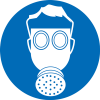

Batch Number: FRAMECPSR
Product Name: Coco glucoside
Product Number: 5060233383931
Brand: Naturallythinking
Supplier:
UK:
Naturallythinking, Unit 2 Mill Lane Trading Estate, Mill Lane, Croydon, CR0 4AA
EU: NTEU Ltd (HE 426545), Nikis 1, Anthoupoli, 2350, Nicosia, Cyprus
Contact Telephone: 020 38563588
Contact Email: support@naturallythinking.eu
2.1 Classification of the substance or mixture
CLASSIFICATION (EC 1272/2008)
2.2 Label elements According to Regulation (EC) No. 1272/2008 (CLP)
2.2.1 Label elements
GHS Product Identifier: Coco glucosideHazard pictogram(s)


HAZARD STATEMENTS
PRECAUTION STATEMENTS
Inci: Aqua, Coco-glucoside
Cas: 7732-18-5/110615-47-9/68515-73-1
Einecs: 604-232-9
D-GLUCOPYRANOSE, OLIGOMERIC, C10-16 ALKYL GLYCOSIDES - REACH registered number(s): 01-2119489418 -23-XXXX
| EINECS | CAS | PBT/WEL | CLP Classification | Percent |
| - | 110615-47-9 | - | Skin Irrit. 2: H315; Eye Dam. 1: H318 | 20 - 40% |
D-GLUCOPYRANOSE, OLIGOMERS, DECYL OCTYL GLYCOSIDES - REACH registered number(s): 01-2119488530 -36-XXXX
| EINECS | CAS | PBT/WEL | CLP Classification | Percent |
| - | 68515-73-1 | - | Eye Dam. 1: H318 | 10-20% |
WATER
| EINECS | CAS | PBT/WEL | CLP Classification | Percent |
| - | 7732-18-5 | - | - | 40-60% |
4.1 Description of first aid measures
Inhalation
Unlikely route of exposure. Remove persons affected by vapour to fresh air. Apply artificial respiration if breathing has ceased or shows signs of failing. Administer oxygen if necessary. If symptoms develop, obtain medical attention.
Skin Contact
Remove contaminated clothing and wash affected skin with plenty of water.Wash contaminated clothing before reuse. If symptoms develop, obtain medical attention.
Eye Contact
Obtain medical attention. If substance has got into the eyes, immediately wash out with plenty of water for at least 10 minutes.
Ingestion
Obtain medical attention. Provided the patient is conscious, wash out mouth with water and give 200-300 ml (half a pint) of water to drink. Do not induce vomiting.
4.2 Most important symptoms and effects, both acute and delayed
Irritation, Coughing. Nausea. Vomiting.
4.3 Indication of the immediate medical attention and special treatment needed
Increased difficulty in breathing
5.1 Extinguishing media
Suitable Extinguishing Media
As appropriate for surrounding fire.
Unsuitable Extinguishing Media
None known.
5.2 Special hazards arising from the substance or mixture
None known.
5.3 Advice for fire-fighters
Self-contained
6.1 Personal precautions, protective equipment and emergency procedures
Put on protective clothing. Avoid contact with skin and eyes.
6.2 Environmental precautions
Do not allow to enter drains, sewers or watercourses.
6.3 Methods and material for containment and cleaning up
Adsorb spillages onto sand, earth or any suitable adsorbent material. Transfer to a container for disposal. To be disposed of as hazardous waste.
6.4 Reference to other sections
See Section: 8 (EXPOSURE CONTROLS/PERSONAL PROTECTION) & 13 (DISPOSAL CONSIDERATIONS)
7.1 Precautions for safe handling
General hygiene measures for the handling of chemicals are applicable. Avoid contact with skin and eyes. Use only in well-ventilated areas.
7.2 Conditions for safe storage, including any incompatibilities
Keep only in the original container in a cool, well-ventilated place. Keep containers properly sealed when not in use.
Storage Temperature
< 40 degC.
Storage Life
2 Year(s)..
Incompatible materials
Strong oxidising and reducing agents.
Other information
Keep away from direct sunlight.
8.1 Control parameters
8.1.1 Occupational Exposure Limits WEL: Workplace Exposure Limit (UK HSE EH40)
LTEL (8 hr TWA mg/m³) Not applicable.
LTEL (8 hr TWA mg/m³) Not applicable.
8.2 Exposure controls
8.2.1 Appropriate engineering controls
Provide adequate ventilation when using the material and follow the principles of good occupational hygiene to control personal exposures.
8.2.2 Personal protection equipment
Eye/face protection Safety spectacles/goggles. EN166.

Skin protection (Hand protection/ Other) Gloves : Nitrile rubber. EN374-3. Apron or other light protective clothing.

Respiratory protection Provide adequate ventilation, including appropriate local extraction. No personal respiratory protective equipment normally required.

Other Guarantee that the eye flushing systems and safety showers are located close to the working place. Do not eat, drink or smoke when using this product. Wash hands before breaks and after work.
8.2.3 Environmental Exposure Controls
Do not allow to enter drains, sewers or watercourses
Information on basic physical and chemical properties (Mixture)
Appearance
Viscous liquid
Colour
Pale yellow
Odour
Almost odourless
Odour Threshold (ppm)
Not available.
pH (Value)(20% solution - water/isopropanol 15%)
11 -12.5
Melting Point (°C) / Freezing Point (°C)
< 0 degC
Boiling point/boiling range (°C):
> 100 degC
Flash Point (°C) [Closed cup]
Not applicable
Evaporation rate (Butyl acetate = 1)
<< 1
Explosive limit ranges
Not applicable.
Vapour Pressure (mmHg) < 1 mmHg at 20 degC
Vapour Density (Air=1) Not applicable.
Density (g/ml) 1.1 (approx) at 20 degC
Solubility (Water) Miscible
Solubility (Other)
Not Soluble in most organic solvents.
Partition Coefficient (n-Octanol/water)
< -0.07 (calculated)
Auto Ignition Temperature (°C)
Not applicable
Decomposition Temperature (°C)
> 200 degC Viscosity (mPa.s) >
Explosive properties
Not explosive.
Oxidising properties Not oxidising
9.2 Other information
10.1 Reactivity
Reacts with - Strong oxidising and reducing agents
10.2 Chemical stability
Stable under normal conditions.
10.3 Possibility of hazardous reactions
None known.
10.4 Conditions to avoid
The product may decompose if heated to temperatures above (40°C):
10.5 Incompatible materials
Strong oxidising and reducing agents.
10.6 Hazardous Decomposition Product(s)
None known
11.1 Information on toxicological effects
11.1.1 Substances
Acute toxicity Ingestion
LD50 > 5 000 mg/kg (rat)
Inhalation (4 hrs)
Not applicable (Test not scientifically justified)
Skin Contact
LD50 > 2 000 mg/kg
Skin corrosion/irritation Irritant.
Serious eye damage/irritation Severe irritant to the eye.
Respiratory or skin sensitization
It is not a skin sensitiser in animal tests.
Mutagenicity
There is no evidence of mutagenic potential.
Carcinogenicity
No evidence of carcinogenicity.
Reproductive toxicity
No evidence of reproductive toxicity.
STOT-single exposure Inhalation :
Irritating to respiratory system. Ingestion : Will cause irritation of the gastrointestinal tract.
STOT-repeated exposure (91 Days.)
No data
11.2 Other information
12.1 Toxicity
(Fish) (96hrs)
LC50 > 5 mg/ l (Danio rerio)(CAS 110615-47-9)
(Daphnia magna) (48hrs)
EC50 > 10 mg/l (Desmodesmus sub.) (CAS 110615-47-9)
(Algae) (72hrs)
EC50 > 15 mg/l) (CAS 110615-47-9)
12.2 Persistence and degradability
Readily biodegradable.
12.3 Bioaccumulative potential (96 hrs)
The product has no potential for bioaccumulation.
12.4 Mobility in soil
This product is predicted to degrade in soil.
12.5 Results of PBT and vPvB assessment
Not classified as PBT or vPvB.
12.6 Other adverse effects
13.1 Waste treatment methods
To be disposed of as hazardous waste. Normal disposal is via incineration operated by an accredited disposal contractor. Consult an accredited waste disposal contractor or the local authority for advice.
13.2 Additional Information
14.1 Land transport (ADR/RID)
UN number
Not classified according to the United Nations ‘Recommendations on the Transport of Dangerous Goods’.
14.2 Sea transport (IMDG)
UN number
Not classified according to the United Nations ‘Recommendations on the Transport of Dangerous Goods’.
14.3 Air transport (ICAO/IATA)
UN number
Not classified according to the United Nations ‘Recommendations on the Transport of Dangerous Goods’.
15.1 Safety, health and environmental regulations/legislation specific for the substance or mixture
15.1.1 EU regulations
Authorisations and/or restrictions on use
EC Standards 82/242 and 82/243/EEC (Detergents) :
This product is > 90% biodegradable in water.
15.1.2 National regulations
None assigned
15.2 Chemical Safety Assessment
Not determined.
The following sections contain revisions or new statements: Sections #1 - #16. (Format)
References:
European Chemicals Agency
European Chemicals Bureau
European Regulations and Directives
Published chemical directories Suppliers’ safety data sheets
UK Health and Safety Executive
US Environmental Protection Agency
Risk Phrases
R38: Irritating to skin.
R41: Risk of serious damage to eyes.
Safety Phrases
S25: Avoid contact with eyes.
S26: In case of contact with eyes, rinse immediately with plenty of water and seek medical advice.
S39: Wear eye/face protection.
Hazard statement(s)
H315: Causes skin irritation.
H318: Causes serious eye damage.
Precautionary statement(s)
P262: Do not get in eyes, on skin, or on clothing.
P280: Wear protective gloves/protective clothing/eye protection/face protection.
P305 + P351 + P338 : IF IN EYES: Rinse cautiously with water for several minutes. Remove contact lenses, if present and easy to do. Continue rinsing.
| Criteria | Fixed Cut off Date |
|
We do not conduct any form of animal testing |
January 1, 2006 |
|
We do not commission any form of animal testing from a third party |
January 1, 2006 |
|
We operate a fixed cut-off date for animal testing and ingredients, which means we will not use any ingredient that has been tested or retested on animals for cosmetics purposes since January 1, 2006 |
January 1, 2006 |
GMO Declaration
We declare that at present all our regisered and commercially available ingredients, extracts, oils, plants and skincare products are derived by traditional plant breeding methods. We do not have any ingredient, extract, oil or skincare product from genetically modified material
To the best of our knowledge, the information contained in the sheet is correct. However, we cannot accept responsibility for any consequences from its use.
Animal Testing Declaration
UK: As set out under the conditions in Schedule 34 - Amendment of Regulation (EC) No 1223/2009 and related amendments of The Product Safety and Metrology etc. (Amendment etc.) (EU Exit) Regulations 2019 neither the cosmetic nor its component product has been tested on animal purposes
EU:As set out in under the conditions in 1223/2009. Art. 15 Nar. Parliament and the Council of the EU 952/2013 neither the cosmetic nor its component product has been tested on animal purposes
WE DO NOT TEST ANY OF OUR PRODUCTS ON ANIMALS AND NEVER HAVE, WE PREFER TO RELY ON OUR KNOWLEDGE OF ESSENTIAL OILS, INGREDIENTS, PLANTS, FLOWERS AND ESTABLISHED TECHNICAL INFORMATION AND PROFESSIONALS TO ENSURE EFFECTIVE AND SAFE PRODUCTS.
We believe there is already a “safe” and known group of product ingredients used in the cosmetics industry which leave enough scope to be creative and innovative in product formulation without the need for anymore animal testing on new experimental ingredients.
Our suppliers each also agree to not to carry out animal testing on the products and ingredients we purchase. We have a self-imposed cut-off date of 2006 (this was the date our cosmetic formulations came into being) although in reality our suppliers normally have animal testing dates far in excess of this or have never tested at all.
We do not conduct any form of animal testing.
We do not commission any form of animal testing from a third party.
We operate a fixed cut-off date for animal testing and ingedients, which means we will not use any ingredient that has been tested or retested on animals for cosmetics purposes since January 1, 2006
If we find that a company is involved in animal testing in anyway that purchases from us, then we will cease supply immediately. It is a term and condition that by purchasing from Naturallythinking you will not involve yourself or your company in any form of Animal Testing, any violation of this will be dealt with as per any violation of our terms and condtions